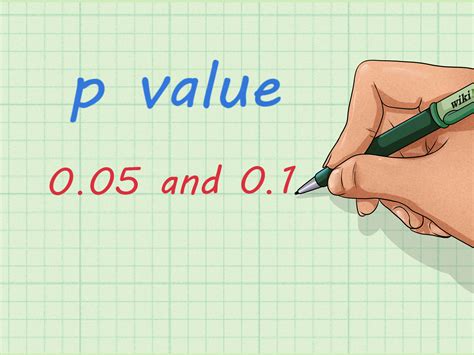How to Compute a P-Value: A Simple Guide for Beginners
Understanding p-values is crucial for interpreting statistical analyses and drawing meaningful conclusions from data. This guide breaks down how to compute a p-value, explaining the underlying concepts in a clear and straightforward manner. We won't delve into complex mathematical formulas, focusing instead on the practical application and interpretation.
What is a P-Value?
Before we jump into the computation, let's define what a p-value actually represents. In simple terms, a p-value is the probability of obtaining results as extreme as, or more extreme than, the observed results, assuming the null hypothesis is true. The null hypothesis is a statement that there's no effect or relationship between variables.
In essence: A low p-value suggests that your observed results are unlikely to have occurred by random chance alone, if the null hypothesis were true. This strengthens the evidence against the null hypothesis.
Steps to Compute a P-Value (Simplified Approach)
Calculating a p-value directly often involves complex statistical distributions and software. However, understanding the process conceptually is key. Here's a simplified approach:
-
State your null and alternative hypotheses: This clearly defines what you're testing. For example:
- Null Hypothesis (H0): There is no difference in average height between men and women.
- Alternative Hypothesis (H1): There is a difference in average height between men and women.
-
Choose a statistical test: The appropriate test depends on your data type and research question. Common examples include:
- t-test: Compares the means of two groups.
- ANOVA: Compares the means of three or more groups.
- Chi-square test: Tests for association between categorical variables.
- Correlation test: Measures the strength and direction of a linear relationship between two variables.
-
Collect and analyze your data: This involves gathering your data, performing the chosen statistical test, and obtaining a test statistic (e.g., t-statistic, F-statistic, chi-square statistic). This step is usually done using statistical software like SPSS, R, or Python.
-
Determine the p-value: This step involves finding the probability of obtaining your test statistic (or a more extreme one) given that the null hypothesis is true. Statistical software typically provides this value directly as part of the test output.
-
Interpret the p-value: A common threshold is 0.05 (5%).
- p-value ≤ 0.05: The results are statistically significant. You reject the null hypothesis and conclude that there is evidence to support the alternative hypothesis.
- p-value > 0.05: The results are not statistically significant. You fail to reject the null hypothesis. This doesn't necessarily mean the null hypothesis is true, but rather that there isn't enough evidence to reject it based on your data.
Using Statistical Software
The actual computation of the p-value is best left to statistical software packages. These tools handle the complex calculations efficiently and accurately. They typically provide the p-value directly as part of the output for each test.
Importance of Effect Size
While the p-value indicates statistical significance, it's crucial to consider the effect size. A statistically significant result with a small effect size might not be practically meaningful. Effect size measures the magnitude of the difference or relationship, providing a more complete picture than the p-value alone.
Conclusion
Understanding p-values is essential for interpreting statistical results. Although the calculation itself is complex and best handled by software, grasping the underlying principles allows for a more informed interpretation of your findings. Remember to always consider both the p-value and the effect size when drawing conclusions from your data.
